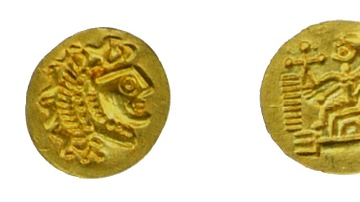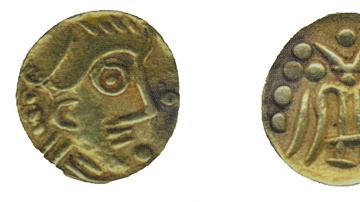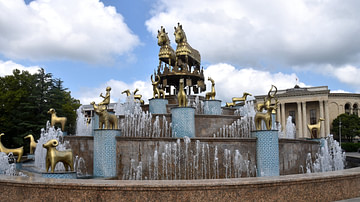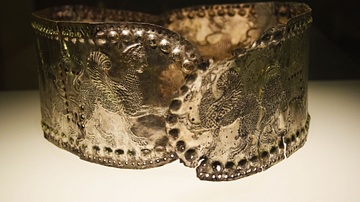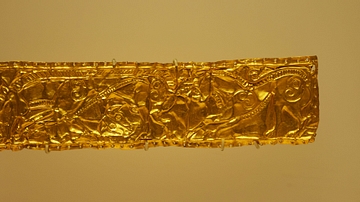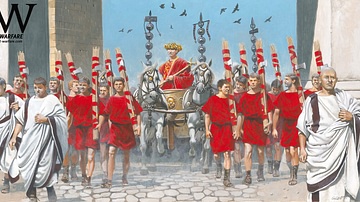Illustration
Description, picture:
Silver. Weight: e.g. 1,28 gr., 2,23 gr., 2,59 gr., 2,93 gr., 2,97 gr., 3,02 gr., 3,10 gr., 3,12 gr., 3,23 gr., 3,24 gr., 3,25 gr., 3,33 gr., 3,42 gr., 3,51 gr., 3,55 gr. d=17/18-19/20mm.
Obverse: Laureate head right/left, crude in style. Distorted Latin inscription around: prototype – CAESAR AVGVSTVS DIVI F. PATER PATRIAE. Circle of the dots.
Reverse: Gaius and Lucius Caesars, standing front, each with a hand resting on a round shield. Spears behind the shields. Simpulum and lituus above the shields. Distorted Latin inscription around: prototype – C. L. CAESARES AVGVSTI F. COS. DESIG. PRINC. IVVENT. Linear circle or circle of the dots.
Mint: Unknown.
Nominal: The weights range from 1,28 gr. to 3,55 gr.
Date: Second half of the 3rd c. CE.
In the 3rd century CE Kartli/Iberia had a shortage of the Roman coins, which were very popular. Thus, the king of Kartli decided to issue local money patterned on the Roman coins being not particularly scrupulous about the images and inscriptions.
Cite This Work
APA Style
geonumismatics.tsu.ge. (2018, February 23). Georgian Imitations of Augustan Denarii. World History Encyclopedia. Retrieved from https://www.worldhistory.org/image/8146/georgian-imitations-of-augustan-denarii/
Chicago Style
geonumismatics.tsu.ge. "Georgian Imitations of Augustan Denarii." World History Encyclopedia. Last modified February 23, 2018. https://www.worldhistory.org/image/8146/georgian-imitations-of-augustan-denarii/.
MLA Style
geonumismatics.tsu.ge. "Georgian Imitations of Augustan Denarii." World History Encyclopedia. World History Encyclopedia, 23 Feb 2018, https://www.worldhistory.org/image/8146/georgian-imitations-of-augustan-denarii/. Web. 17 Apr 2025.

